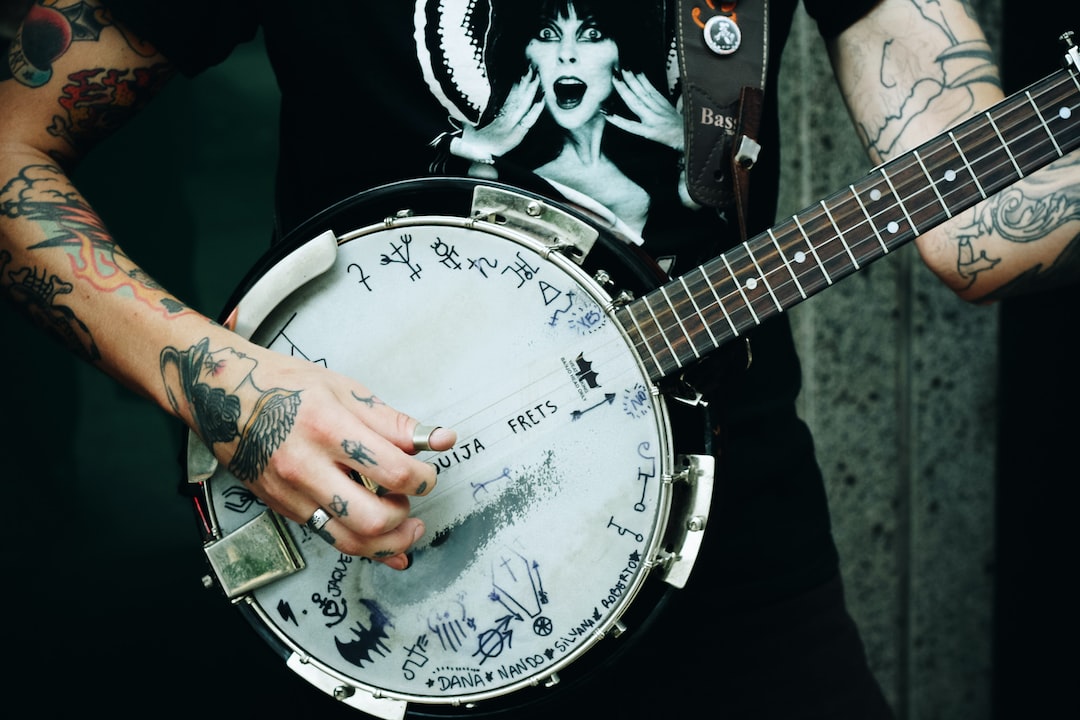Music videos have been a staple in the music industry for decades, providing a visual representation of an artist's music and helping to promote their songs. From the early days of MTV to the rise of YouTube, how we consume and create music videos has drastically changed. Let's look at the evolution of music videos and how they have impacted the music industry.
The Birth of MTV

by Maciej Ruminkiewicz (https://unsplash.com/@mruminkiewicz)
1981 MTV (Music Television) was launched and became the first 24-hour music channel. This marked a significant shift in the music industry, as artists now had a new platform to showcase their music and reach a wider audience. Music videos became a crucial part of an artist's success, with MTV heavily influencing the popularity of certain songs and artists.
The Golden Age of Music Videos
During the 1980s and 1990s, music videos reached their peak in popularity. With the rise of iconic artists like Michael Jackson and Madonna, music videos became more elaborate and cinematic. These videos were often played on repeat on MTV, allowing viewers to become familiar with the songs and artists. This era also saw the birth of iconic music video directors like Spike Jonze and Hype Williams, who brought a unique visual style to their work.
The Decline of MTV and the Rise of YouTube
As the internet became more accessible, the popularity of MTV began to decline. With the rise of online platforms like YouTube, artists no longer had to rely on MTV to showcase their music videos. This opened up opportunities for independent artists to create and share their music videos without needing a major record label or expensive production budgets.
The Impact of Social Media
With the rise of social media, music videos have become even more critical in the music industry. Platforms like Instagram and TikTok have made it easier for artists to promote their music videos and reach a wider audience. These platforms also allow for more interaction between artists and their fans, creating a more personal connection and increasing the impact of music videos.
The Future of Music Videos
As technology advances, the world of music videos is undergoing a significant transformation. The rise of virtual reality and 360-degree videos has revolutionized the music video experience, enabling viewers to immerse themselves in the video's environment fully. These technologies create an interactive and dynamic experience where the viewer can turn, look around, and feel a sense of physical presence within the video.
In addition, music artists are experimenting with interactive music videos that offer a unique and personalized viewing experience. Interactive music videos allow the viewers to choose their adventure, make decisions, and create a unique narrative. This new trend in music videos provides a shift from passive consumption to active participation, where the viewer can control and shape the story's outcome.
The Importance of Music Videos
Despite the changes in how we consume and create music videos, one thing remains constant – their importance in the music industry. Music videos not only provide a visual representation of an artist's music, but they also help to create a brand and image for the artist. They also serve as a way for artists to connect with their fans and promote their music creatively and engagingly.
As we continue to see advancements in technology and the rise of new platforms, the evolution of music videos will continue. But one thing is for sure – music videos will always be an integral part of the music industry, providing a visual representation of an artist's music and helping to connect them with their fans.

 by Maciej Ruminkiewicz (https://unsplash.com/@mruminkiewicz)
1981 MTV (Music Television) was launched and became the first 24-hour music channel. This marked a significant shift in the music industry, as artists now had a new platform to showcase their music and reach a wider audience. Music videos became a crucial part of an artist's success, with MTV heavily influencing the popularity of certain songs and artists.
by Maciej Ruminkiewicz (https://unsplash.com/@mruminkiewicz)
1981 MTV (Music Television) was launched and became the first 24-hour music channel. This marked a significant shift in the music industry, as artists now had a new platform to showcase their music and reach a wider audience. Music videos became a crucial part of an artist's success, with MTV heavily influencing the popularity of certain songs and artists.
 by Maciej Ruminkiewicz (https://unsplash.com/@mruminkiewicz)
1981 MTV (Music Television) was launched and became the first 24-hour music channel. This marked a significant shift in the music industry, as artists now had a new platform to showcase their music and reach a wider audience. Music videos became a crucial part of an artist's success, with MTV heavily influencing the popularity of certain songs and artists.
by Maciej Ruminkiewicz (https://unsplash.com/@mruminkiewicz)
1981 MTV (Music Television) was launched and became the first 24-hour music channel. This marked a significant shift in the music industry, as artists now had a new platform to showcase their music and reach a wider audience. Music videos became a crucial part of an artist's success, with MTV heavily influencing the popularity of certain songs and artists.



